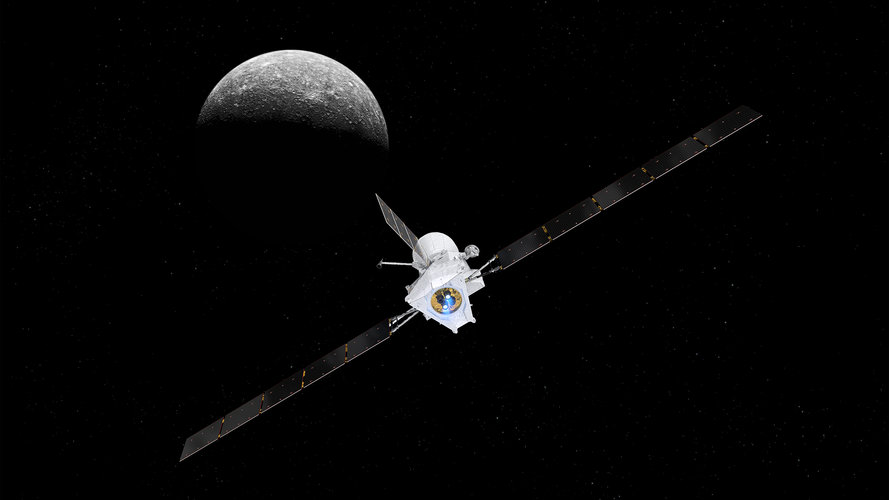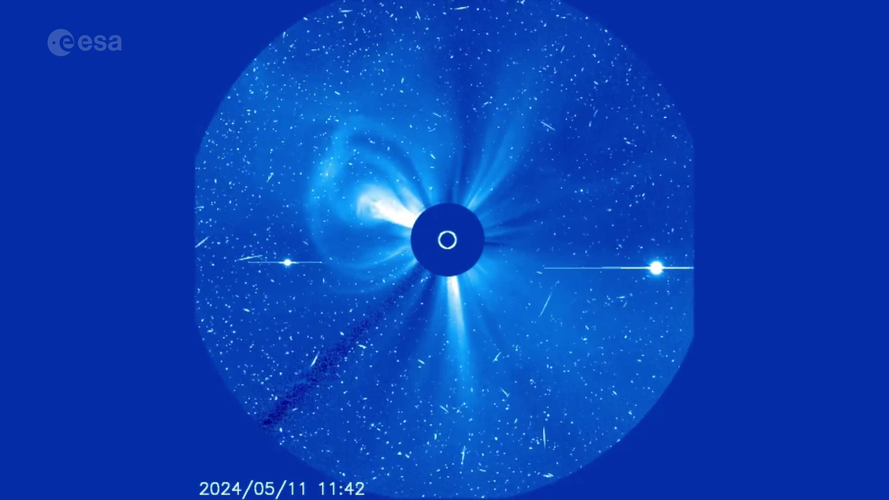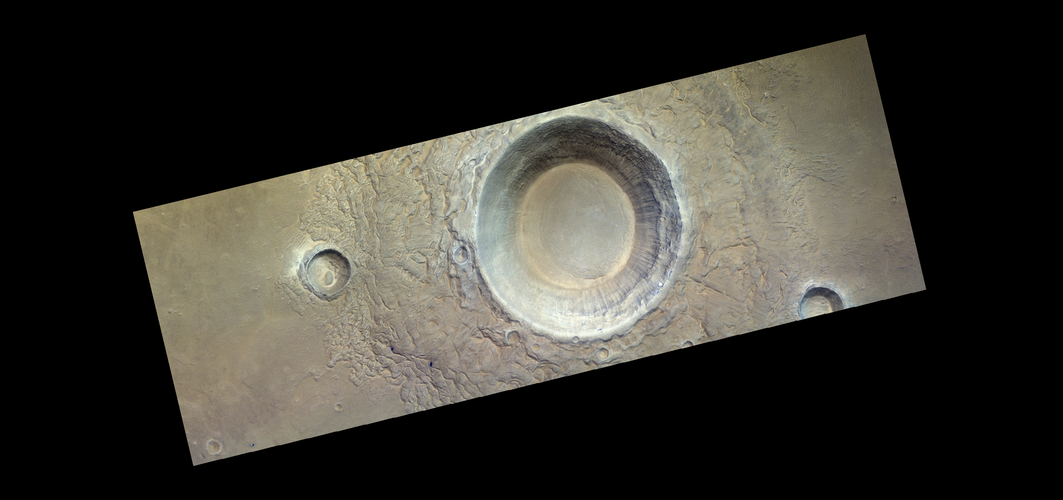NASA selects UW-led project to study atmosphere layers
Wednesday, 15 May 2024 15:36 A project led by the University of Washington (UW) aiming to better understand the Earth's atmosphere is a finalist for NASA's next generation of Earth-observing satellites. NASA has announced that these projects will each receive $5 million for a one-year concept study.
The project, STRIVE (Stratosphere Troposphere Response using Infrared Vertically-Resolved Light Explorer), focuses on th
A project led by the University of Washington (UW) aiming to better understand the Earth's atmosphere is a finalist for NASA's next generation of Earth-observing satellites. NASA has announced that these projects will each receive $5 million for a one-year concept study.
The project, STRIVE (Stratosphere Troposphere Response using Infrared Vertically-Resolved Light Explorer), focuses on th Voyager Space to Develop New Airlock Concept for Mars Transit
Wednesday, 15 May 2024 15:36 Voyager Space (Voyager) announced it has received a Collaborative Announcement Notice (CAN) from NASA's Marshall Space Flight Center (MSFC) to develop an airlock for the Mars Transit Vehicle, also known as Deep Space Transport. This cooperative agreement aims to enhance technology development at MSFC while advancing Voyager's technology and infrastructure.
This 12-month study, starting thi
Voyager Space (Voyager) announced it has received a Collaborative Announcement Notice (CAN) from NASA's Marshall Space Flight Center (MSFC) to develop an airlock for the Mars Transit Vehicle, also known as Deep Space Transport. This cooperative agreement aims to enhance technology development at MSFC while advancing Voyager's technology and infrastructure.
This 12-month study, starting thi UH Manoa researchers uncover origins of life's building blocks in space
Wednesday, 15 May 2024 15:36 Researchers at the University of Hawai'i at Manoa have made a key discovery about the formation of essential molecules in space, which could provide insights into how life began on Earth.
A team from the Department of Chemistry has identified how nitrogen-carrying aromatic molecules can form in space. These molecules are crucial in many chemical and biological processes and are found in co
Researchers at the University of Hawai'i at Manoa have made a key discovery about the formation of essential molecules in space, which could provide insights into how life began on Earth.
A team from the Department of Chemistry has identified how nitrogen-carrying aromatic molecules can form in space. These molecules are crucial in many chemical and biological processes and are found in co Astronomers spot a giant planet that is as light as cotton candy
Wednesday, 15 May 2024 15:36 Astronomers at MIT, the University of Liege in Belgium, and elsewhere have discovered a huge, fluffy oddball of a planet orbiting a distant star in our Milky Way galaxy. The discovery, reported in the journal Nature Astronomy, is a promising key to the mystery of how such giant, super-light planets form.
The new planet, named WASP-193b, appears to dwarf Jupiter in size, yet it is a fractio
Astronomers at MIT, the University of Liege in Belgium, and elsewhere have discovered a huge, fluffy oddball of a planet orbiting a distant star in our Milky Way galaxy. The discovery, reported in the journal Nature Astronomy, is a promising key to the mystery of how such giant, super-light planets form.
The new planet, named WASP-193b, appears to dwarf Jupiter in size, yet it is a fractio SwRI examines substorm in Earth's magnetotail with MMS data
Wednesday, 15 May 2024 15:36 Southwest Research Institute (SwRI) is analyzing an unusual event in Earth's magnetotail, the part of the magnetosphere trailing away from the Sun. Using data from NASA's Magnetospheric Multiscale (MMS) mission, SwRI scientists are studying substorms, disturbances in the magnetotail that release energy and can cause aurorae.
Since their launch in 2015, the MMS spacecraft have been examinin
Southwest Research Institute (SwRI) is analyzing an unusual event in Earth's magnetotail, the part of the magnetosphere trailing away from the Sun. Using data from NASA's Magnetospheric Multiscale (MMS) mission, SwRI scientists are studying substorms, disturbances in the magnetotail that release energy and can cause aurorae.
Since their launch in 2015, the MMS spacecraft have been examinin MIT researchers discover the universe's oldest stars in our own galactic backyard
Wednesday, 15 May 2024 15:36 MIT researchers, including several undergraduate students, have discovered three of the oldest stars in the universe, and they happen to live in our own galactic neighborhood.
The team spotted the stars in the Milky Way's "halo" - the cloud of stars that envelopes the entire main galactic disk. Based on the team's analysis, the three stars formed between 12 and 13 billion years ago, the ti
MIT researchers, including several undergraduate students, have discovered three of the oldest stars in the universe, and they happen to live in our own galactic neighborhood.
The team spotted the stars in the Milky Way's "halo" - the cloud of stars that envelopes the entire main galactic disk. Based on the team's analysis, the three stars formed between 12 and 13 billion years ago, the ti Discovery of organic molecules on Saturn's moon
Wednesday, 15 May 2024 15:36 In 2018, very large organic molecules were discovered in ice particles on Saturn's moon Enceladus. Whether they indicate the existence of life or were created in some other way is still unclear. A recent study could help answer this question. Conditions that support or maintain life in extraterrestrial oceans might leave molecular traces in grains of ice. The research was conducted at the FU Ber
In 2018, very large organic molecules were discovered in ice particles on Saturn's moon Enceladus. Whether they indicate the existence of life or were created in some other way is still unclear. A recent study could help answer this question. Conditions that support or maintain life in extraterrestrial oceans might leave molecular traces in grains of ice. The research was conducted at the FU Ber Future spacecraft control centre unveiled by ESA
Wednesday, 15 May 2024 15:36 "ESA's new operations centre will be efficient, sustainable, adaptable and accessible," says Rolf Densing, ESA's Director of Operations and head of the ESOC site. "The new building will ensure Europe's continued ability to implement its most ambitious space missions and will serve as an inspirational window into the world of spacecraft operations for experts, the public and decision-makers."
"ESA's new operations centre will be efficient, sustainable, adaptable and accessible," says Rolf Densing, ESA's Director of Operations and head of the ESOC site. "The new building will ensure Europe's continued ability to implement its most ambitious space missions and will serve as an inspirational window into the world of spacecraft operations for experts, the public and decision-makers." Sidus Space activates LizzieSat-1 payload after commissioning
Wednesday, 15 May 2024 15:36 Sidus Space (NASDAQ: SIDU) has begun activating the payload on LizzieSat-1 (LS-1) following the completion of its commissioning phase.
LS-1 was launched and deployed via SpaceX Falcon 9 from Vandenberg SLC-4 on March 4, 2024. The Sidus team completed the Launch and Early Operations Phase (LEOP) on March 14 after establishing communications with the spacecraft and receiving NORAD ID 59132 f
Sidus Space (NASDAQ: SIDU) has begun activating the payload on LizzieSat-1 (LS-1) following the completion of its commissioning phase.
LS-1 was launched and deployed via SpaceX Falcon 9 from Vandenberg SLC-4 on March 4, 2024. The Sidus team completed the Launch and Early Operations Phase (LEOP) on March 14 after establishing communications with the spacecraft and receiving NORAD ID 59132 f Glitch on BepiColombo: work ongoing to restore spacecraft to full thrust
Wednesday, 15 May 2024 13:00
New Director of CSC and Head of ECSAT
Wednesday, 15 May 2024 11:39
Laurent Jaffart took up duty as Director of Connectivity and Secure Communications (D/CSC) and Head of ECSAT in Harwell, UK, on 15 May 2024.
Terran Orbital takes charge after switching propulsion suppliers on satellite program
Wednesday, 15 May 2024 10:33

SOHO’s view of the 11 May 2024 solar storm
Wednesday, 15 May 2024 09:00 Video:
00:00:29
Video:
00:00:29
Over the weekend of 10–12 May 2024, Earth was struck by the largest solar storm in more than a decade. While many of us enjoyed colourful auroras lighting up Earth’s protective atmosphere, spacecraft had to endure being buffeted by incredibly strong solar winds and electromagnetic radiation.
Positioned between the Sun and Earth, the ESA/NASA Solar and Heliospheric Observatory (SOHO) caught the entire solar outburst on camera. The Sun can be seen spewing out clouds of particles, with an extremely large burst sent to Earth on 11 May. The bright spots on the left and right are Jupiter



 Image:
The eye of the crater
Image:
The eye of the crater